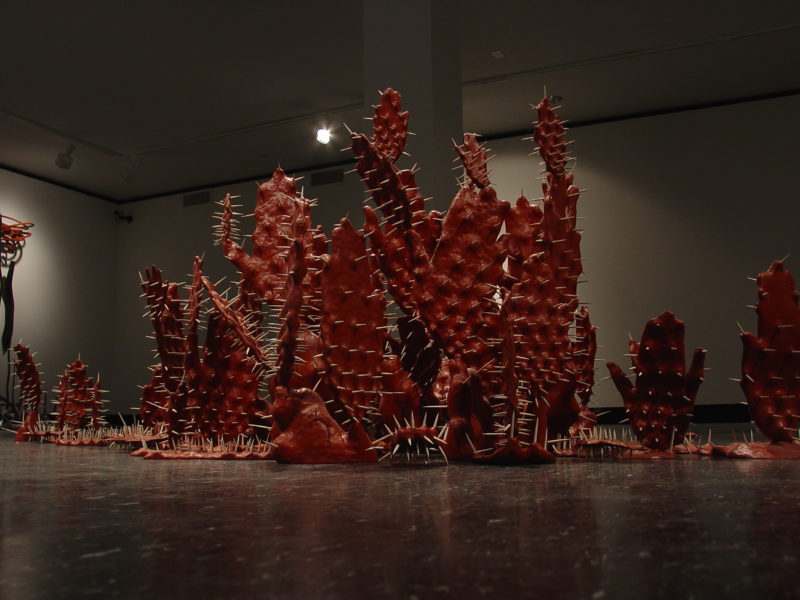Archive
George Lorio George Lorio
Artist Statement
“I live near the Rio Grande; the brown green strip of flowing water which divides countries, cultures and landscapes. The International Bridge connecting Brownsville and Matamoras has a plaque at midpoint with a line going from top to bottom delineating theAmerican and Mexican territories. Looking over the bridge through the chain mesh preventing jumping, it is hard to discern Mexican water from American water except for the line on the plaque; however, the differences in lifestyles on the two opposing banks are significant. This topography of south Texas and northern Mexico is very similar, semi-arid except for this thin ribbon of green called the Valley (or Valle de Tejas). There is no noticeable depression as one would expect with the notion of valley; the hundred miles of grey, parched, mostly uninhabitable land from Corpus Christi south to Brownsville suddenly and progressively greens with the approach to the river. Water is the vital yet limited nurturance of the region; the river is the main source for crop irrigation, drinking water and sanitation.
The river, the US border, is the southern mote for the lower forty-eight states maintained in its present channel by treaty. It has altered its location over the millennia leaving interrupted meanders called recasas (a local word for the fresh water lakes with a Spanish origin meaning hang-over) which now form fresh water reservoirs. From the air, the resacas appear like the convoluted walls of a uterine lining supporting the landscape.This side of the river is the “New Jerusalem” of the first, second or third generationMexican-Americans who have made it over. The Mexican side has stratified wealthy elite whose money allows casual access and a less privileged population whose legal crossings are monitored and temporary or whose illegal passage is covert and strained. I made “Frontera/Border” in the past few months (2006) reflecting on these issues.
I use wood as the medium for the works; the process of formation is slow and laborious.The carved surfaces are not renderings but the essential qualities alluding to water. The wood is warm to the touch and I cloth the surface with a skin of black. I am very aware of the grain of the wood like the current of water; the grain provides the strength of the structure. I wish this strength to be subtle, below the surface; hence, I paint them.
In all these sculptures, I use a metaphor of natural forms to reflect on my life experiences. My constructed works become poetic allusions to the recognizable attributes of natural shapes. The imagery employs motifs derived from the surrounding landscape embracing myth and allegory. The botanical works allude to the rapid, fleshy growth of seasonal cycles, which have a sinuous organic line quickly formed and responding to the brief opportunity for life.
With the Rorschach Leaves, I consider the functions of the leaf in nature. The leaf produces the plant’s food, and also is a possible food source for mankind.It is also part of nature’s sheltering canopy. Leaf surfaces possess varied shapes and configurations. Rorschach’s ink blots are random shapes, which we interpret by giving importance to the perceived meanders of the dark fluid stains.I combine the natural phenomena of botanical variations with the psychological instrument for communication. Leaves become metaphors.
In some of the modular pieces, I establish contrasts within sculptures, suggesting meaning by the placement of separate wrought portions. The adjacent modules allude to natural forms, which have dissimilar functions within nature. The combined allusion encourages interpretation. I am more interested in the archetypal implications of color from archaic cultures than in the use of the referential hues of extant foliage.In my use of black, it is not the color of mourning but a motif of optimism as in the darkness of fertile soil. Red ochre becomes an organic hue that refers to blood.White, color of dry bones, suggests mortality.”




